27 Tiny Everyday Mistakes You're Probably Making But Don't Know It
From laundry to basic hygiene, here are all the things you're regularly doing wrong.

When you make a mistake in the presence of others, they're usually quick to point it out. Our bosses correct us, our spouses correct us, our kids correct us, and even the Target cashier who breaks the news that our coupon is expired corrects us. And while these flubs may be embarrassing, they're far from the only ways we're messing up on a regular basis. In fact, behind closed doors, we all do a whole litany of things incorrectly, from minor errors in the kitchen to major mistakes that could seriously harm our overall health. Read on to discover the everyday mistakes you're making—and how to quickly edit them out of your life.
1
Washing your hands for less than 20 seconds
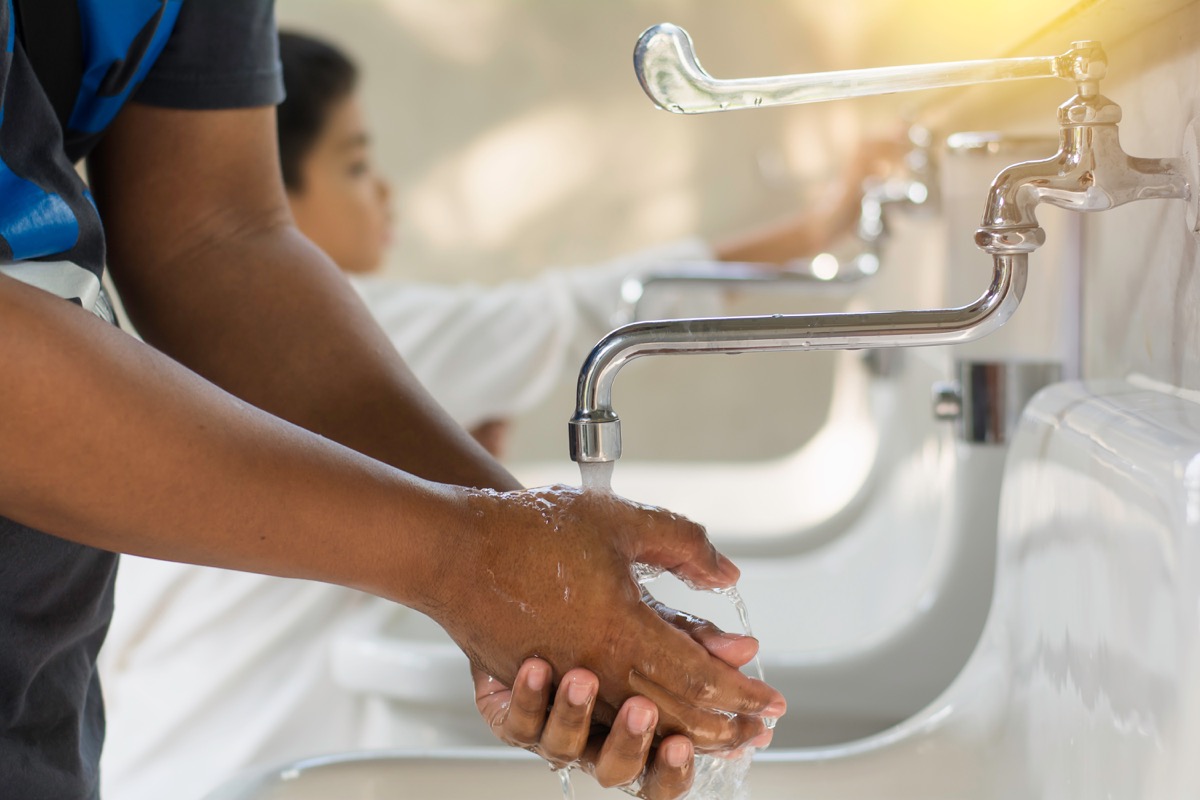
You're probably washing your hands with relative frequency throughout the day—in fact, according to the National Cleaning Institute, 50 percent of adults wash their hands more than 10 times every single day. However, 73 percent of those individuals wash their hands for under 20 seconds, and a 2013 study conducted at Michigan State University revealed that just five percent of people monitored washed their hands correctly.
If you want to rid your hands of potentially harmful germs, wet your hands first, lather with soap, spend at least 20 seconds washing them together, rinse with clean water, and turn off the tap with your elbow to be extra safe.
2
Brushing your teeth after eating

Many people brush their teeth twice a day—once when they wake up and once before they go to sleep. But if you're one of those people who's brushing post-meals as well, you're not actually doing your oral health a favor. According to a 2004 study published in the journal Caries Research, brushing directly after eating can erode dentin, the layer below your teeth's enamel, more quickly than if you stuck to brushing only at the beginning and end of your day.
3
Using mouthwash too often

While using mouthwash every now and then can help keep your mouth healthy, using it too frequently could have the opposite effect. In addition to washing away beneficial bacteria, a 2017 study published in the journal Nitric Oxide revealed that frequent mouthwash use may actually increase a person's risk of developing type 2 diabetes.
4
And taking too many showers

You might feel great after a long, hot shower, but spending a prolonged period of time under that warm tap may actually have a deleterious effect on your health. Not only can showering too frequently wash off some of the good bacteria on your body that keeps you healthy, but 2014 research published in the Journal of Allergy and Clinical Immunology suggests that it can also lead to skin problems, such as eczema.
5
Chilling your drink in a bucket of ice
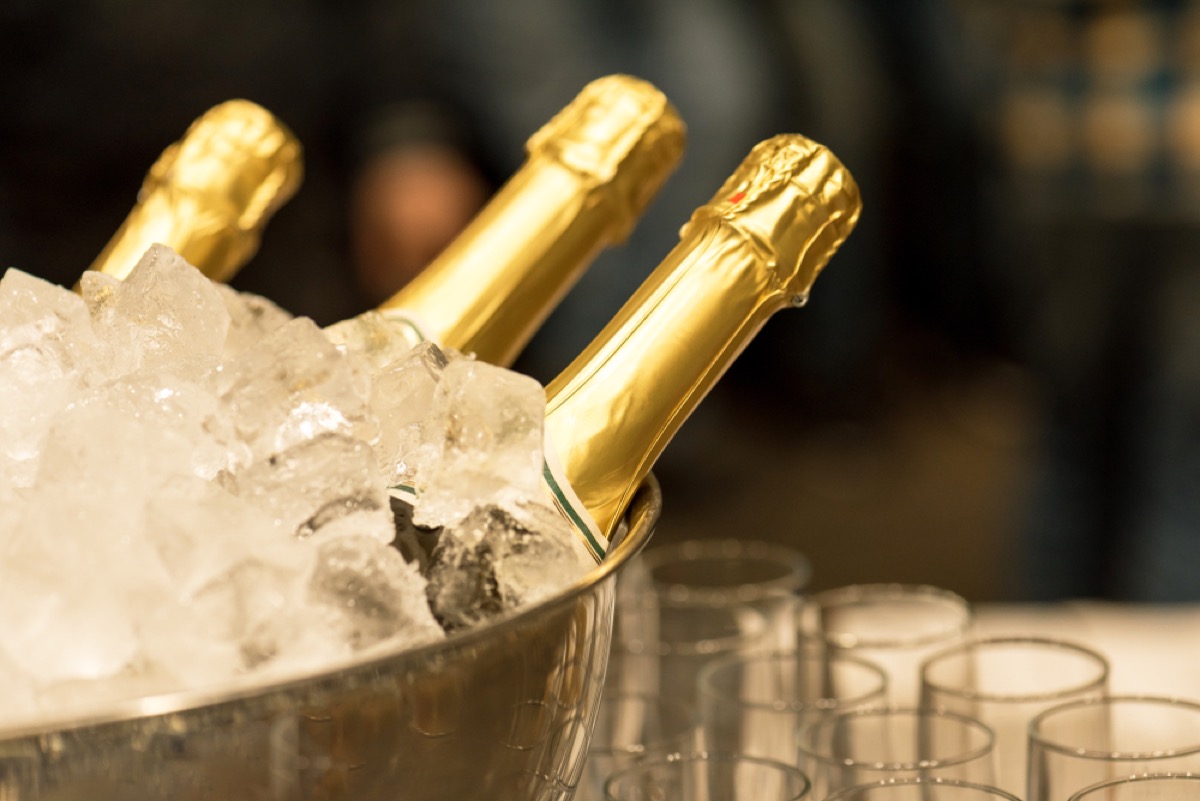
Not necessarily an "everyday" mistake, but a common one nonetheless, is popping a bottle of champagne, wine, or any other kind of beverage straight into a bucket of ice so you can enjoy it chilled. If you really want to cool those drinks quickly, however, you're better off using a salt-and-ice-water combo instead.
"It brings the temperature of the water down lower than a normal ice bath, and the contact with water ensures all surface area is getting hit," says Zach Mack, a beverage industry expert and owner of Alphabet City Beer Co. in New York City. "If you can manage it without making a mess, stirring the bottle around in the ice bath is even faster."
And if you're worried that you don't have enough time for a proper ice bath, don't be afraid to place that bottle in the freezer for a few. "If all else fails, 10 to 20 minutes in the freezer is the next best option," says Mack.
6
Holding a glass of wine with your palm

If you're holding you wine glass by the bowl, you're making a common mistake: The heat from your hand can alter the flavor of your beverage. "People don't realize how quickly they warm up their wine or beer by holding the bulb of the glass with their palm," says Mack.
Instead, hold the glass by the stem, which may feel precarious but it's actually helpful. "Holding the glass by the stem also makes it easier to swirl or agitate the wine or beer to get more oxygen into the glass and aerate the wine, and also to get aromas up and out of the glass," Mack notes.
So, what's the proper by-the-stem technique exactly? Pinch the stem between your thumb and forefinger and you'll maintain the optimal temperature for your drink while keeping its intended flavor.
7
Storing your wine glasses upside down
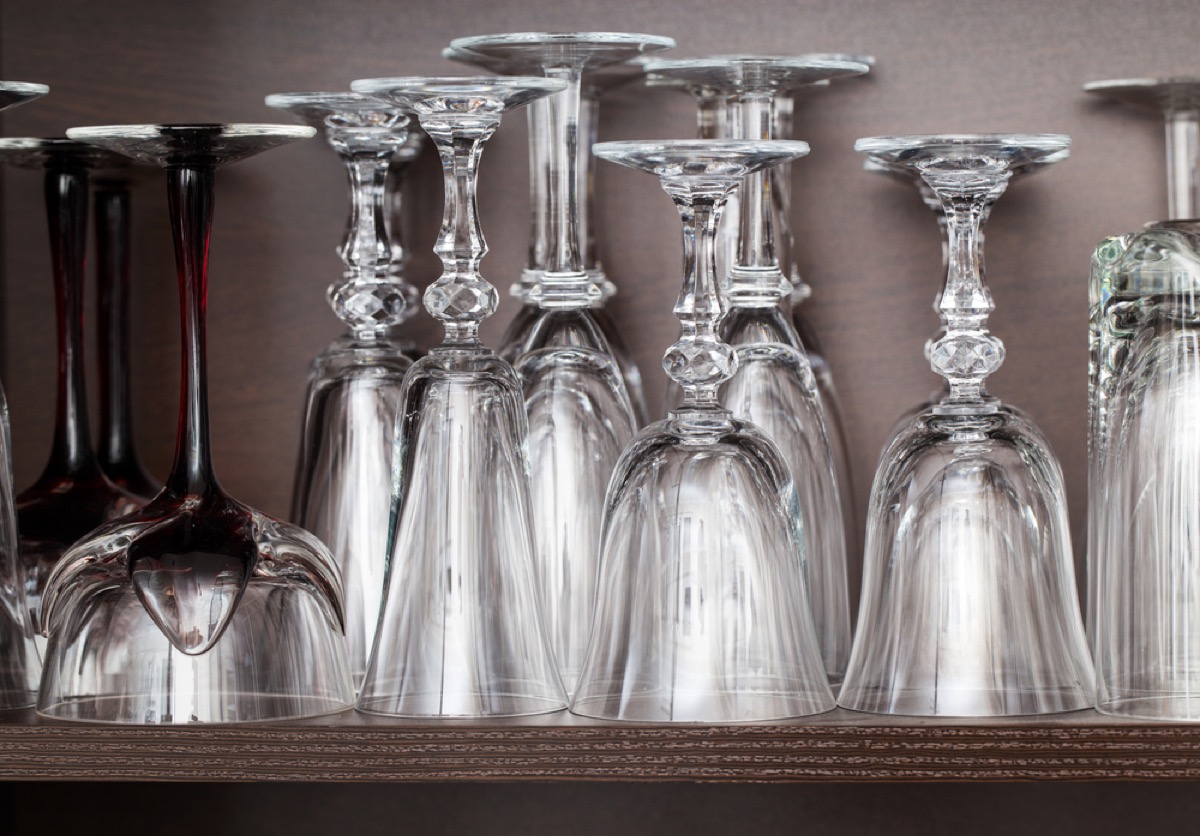
While placing wine glasses on the shelf rim-down may keep dust from getting into them, it could also make them more prone to breakage. Since the rim of a wine glass is its thinnest—and therefore, most delicate—part, storing a glass rim-down actually increases its risk of developing pressure cracks over time, Mack says. Instead, stand them stem-down and you'll not only increase their longevity, but reduce the risk of getting moisture trapped inside the cup.
8
Loading your dishwasher without a strategy

If you think all parts of your dishwasher are created equal, think again. Specific areas are more adept at cleaning specific grime. For example, a study from the University of Birmingham revealed that dishes soiled with carbohydrate-heavy foods will get cleaner placed closer to the center of the machine, while those with remnants of protein-rich foods are better off on the perimeter of the bottom rack.
9
Putting eggs and dairy products in your fridge door shelves
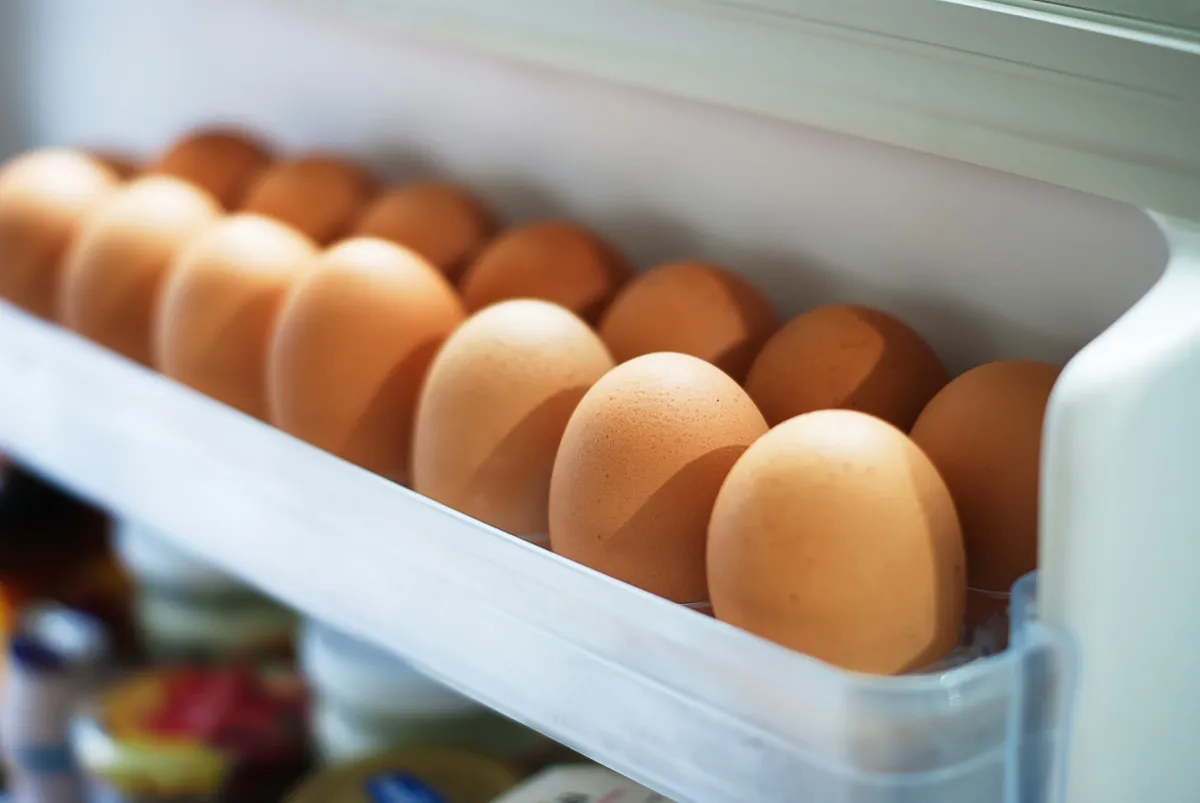
The door of your fridge may have an obvious spot for those cartons of milk and eggs, but storing them there can actually do more harm than good. According to a 2013 study published in Hospitality Review, the door of your fridge and its upper shelves are warmer than its lower shelves, meaning that foods prone to spoiling quickly should be placed on the bottom shelf and toward the back, where it's cooler
10
Pouring laundry detergent on top of your clothes
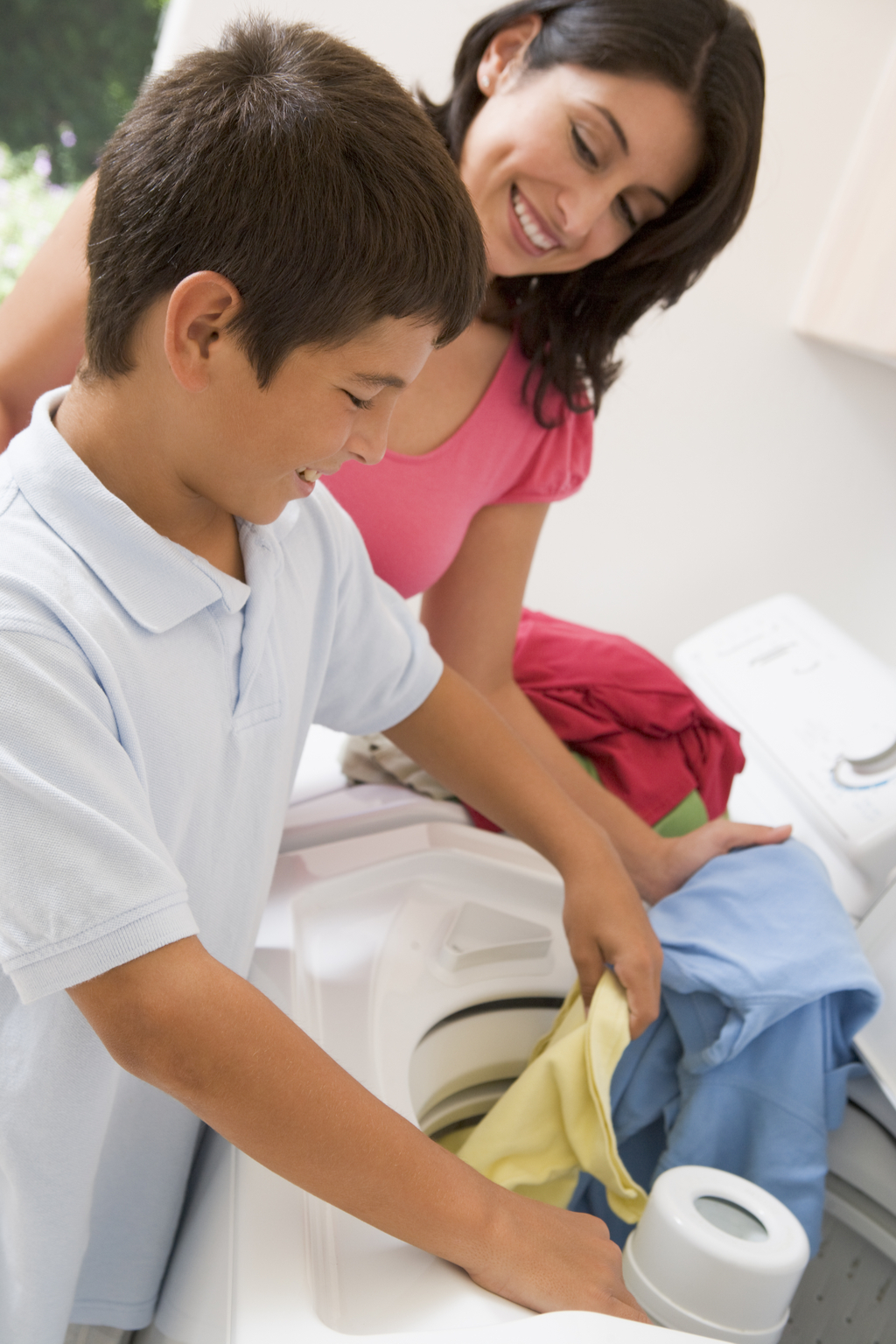
Keeping your clothes clean is a more precise business than you might imagine. First, if you're pouring detergent directly onto your clothes in a top-loading washer, it's time to put an end to that behavior stat. Instead, fill up the drum with water and pour your detergent in so it will be evenly distributed on all your clothes.
Also, just because the machine is frequently full of soap doesn't mean things are getting clean. In fact, a 2015 study published in the journal Frontiers in Microbiology found that washing machines often harbor a host of harmful bacteria, from staph to various gram-negative bacteria—a category that includes E. coli. So, make sure to give your machine a thorough wipe down whenever possible, and run a hot-water-and-bleach cycle at least once a month.
11
Cleaning your jeans too frequently
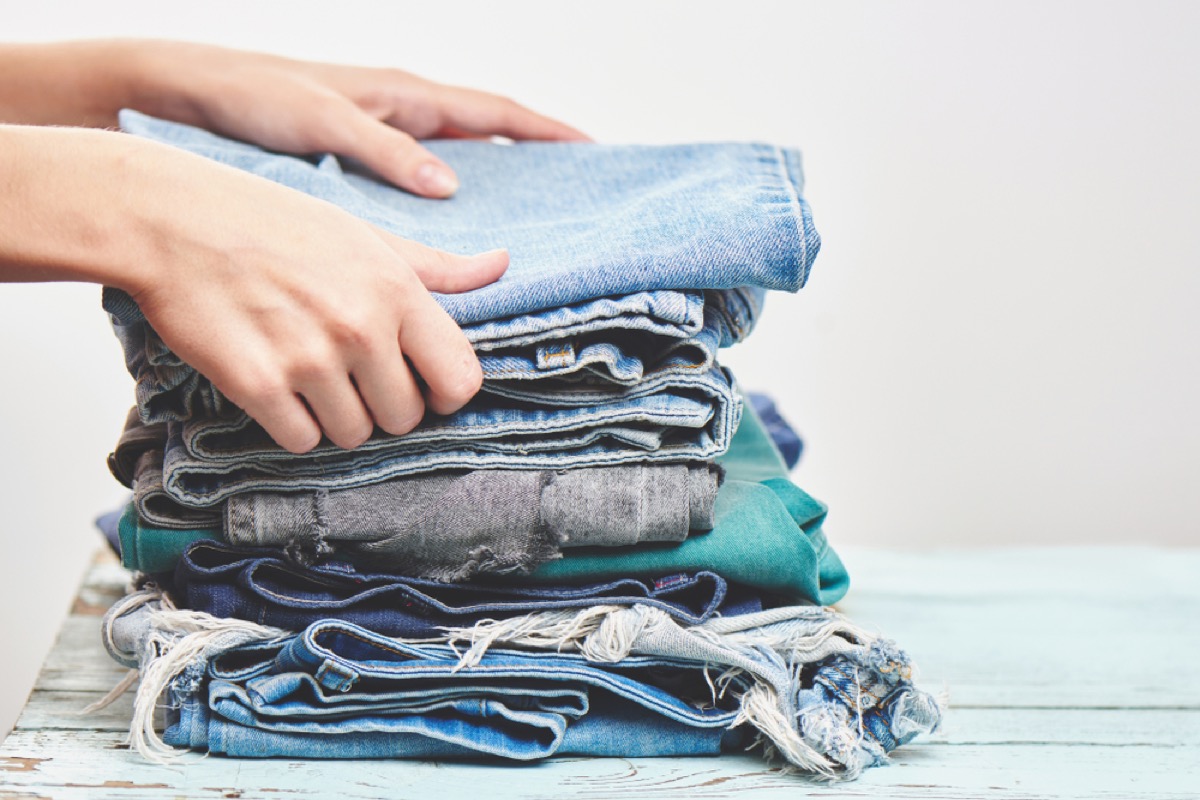
Ask any jeans-wearer and they'll tell you: There's no better way to ruin the shape and color of your favorite denim than washing them after every wear. Actually, there's scientific proof: In a 2016 study published in the International Journal of Consumer Studies, frequently washed jeans lost four percent of their total fibers over the course of the research—twice that of a less frequently washed pair—but didn't have a significantly lower bacterial load.
Eager to make your jeans a little less gross? Try freezing them instead to kill that lingering bacteria. Seriously!
12
Not switching the direction of your ceiling fan seasonally
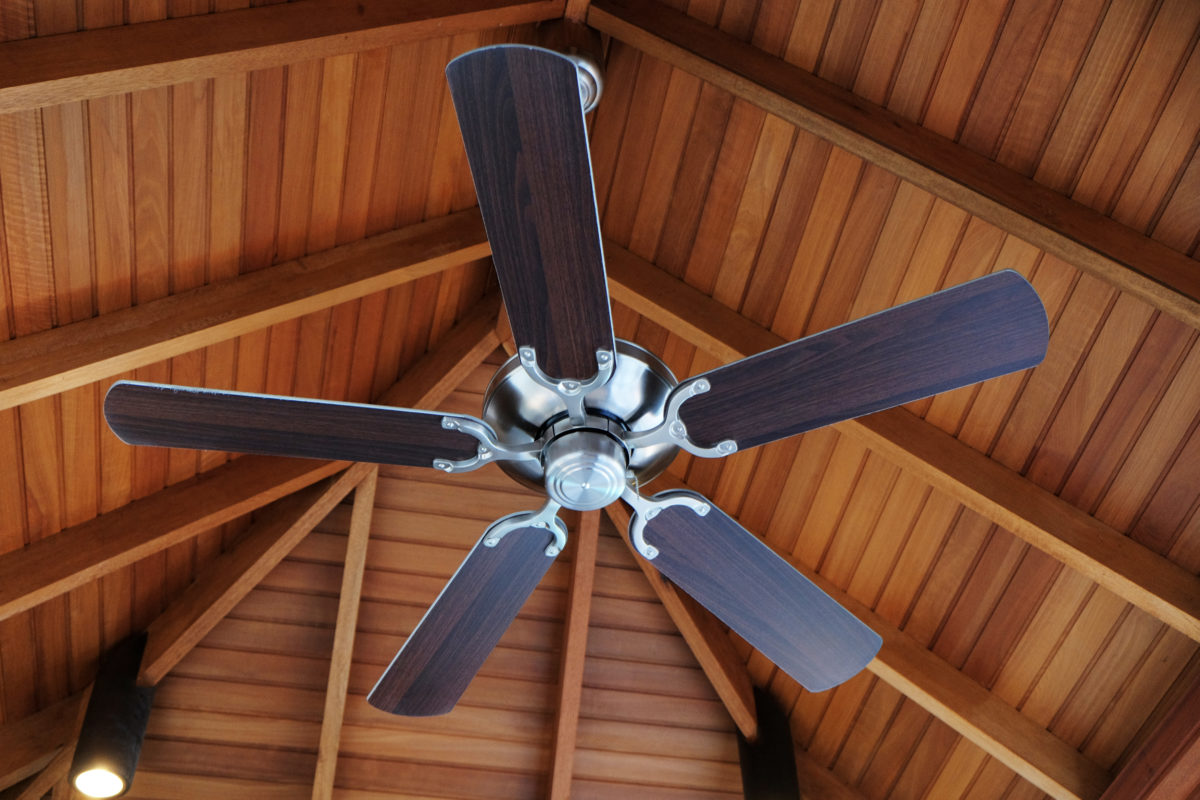
Though you might only use your ceiling fan during the warmer months, it can also be an essential tool for keeping warm in the winter—if you know how to use it, that is. In the spring and summer, you'll want to run your fan counter-clockwise to push cold air down toward your body, making you feel cooler. In the fall and winter, you'll want to flip the switch on your fan's base so that it spins clockwise, pushing warm air down, thus keeping the whole room warmer.
13
Cleaning your blender in the dishwasher

If you're just rinsing out your blender when you're done with it or popping it in your dishwasher, odds are you aren't getting it as clean as you could. Instead, fill your blender with a little bit of warm water and dish soap and run it for a few seconds to get the inside sparkling before rinsing it out.
14
Waiting for food to cool before refrigerating it

One of the more surprising things you're doing wrong in the kitchen? Waiting for hot food to cool before putting it away. While many people believe this is a safer way to store those leftovers, the opposite is actually true. In fact, according to the USDA's Food Safety and Inspection Service, food should never spend more than two hours outside of a refrigerator, because it's more likely to enter the so-called danger zone—above 40º Fahrenheit for cold foods and below 140º for hot ones. And make sure to separate large batches of food into smaller containers so it cools off quickly—then pop them into the fridge as soon as possible.
15
Plunging a sink with a toilet plunger

If you've ever wondered why plunging your clogged sink never yields any results, it's likely because you're using the wrong tool. For this task, you should be using a cup plunger, a wider plunger with an evenly distributed bottom that can properly affix to the bottom of your sink. For a toilet, you'll want to use a flange plunger, which is slightly narrower and has a longer plunging mechanism in the center.
16
Brushing your hair from the bottom
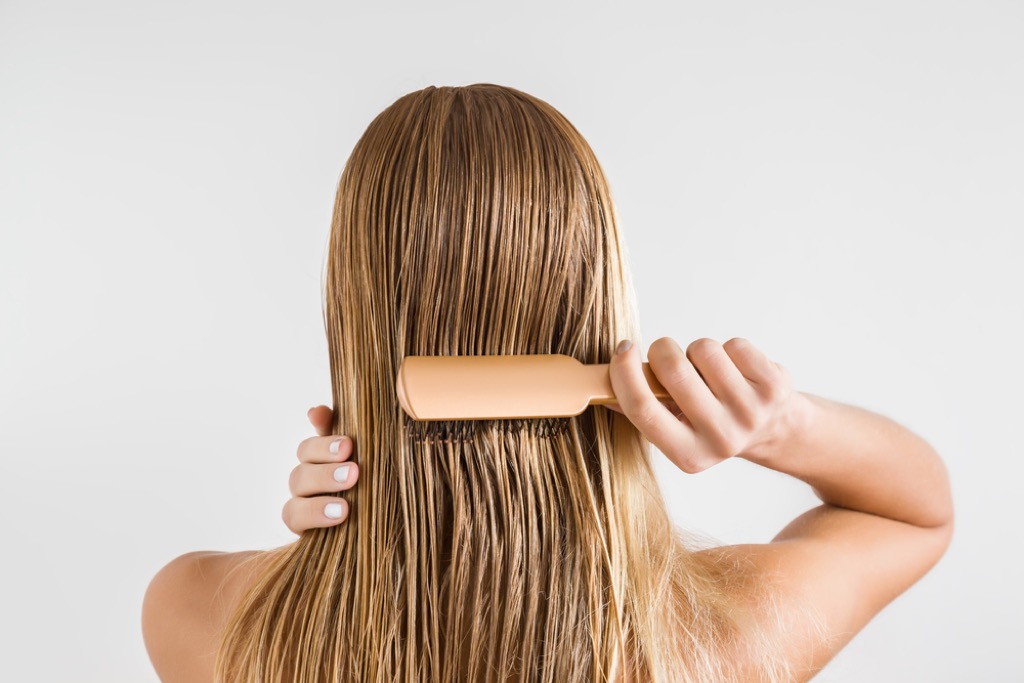
While you may find that you have more tangles in your hair toward the bottom, if you're not brushing from the top, you're doing yourself a disservice. Brushing from the scalp downward helps distribute some of the oils produced by your scalp, making your hair look shinier and helping you keep your scalp from looking greasy.
17
Using a bobby pin with the wavy side up
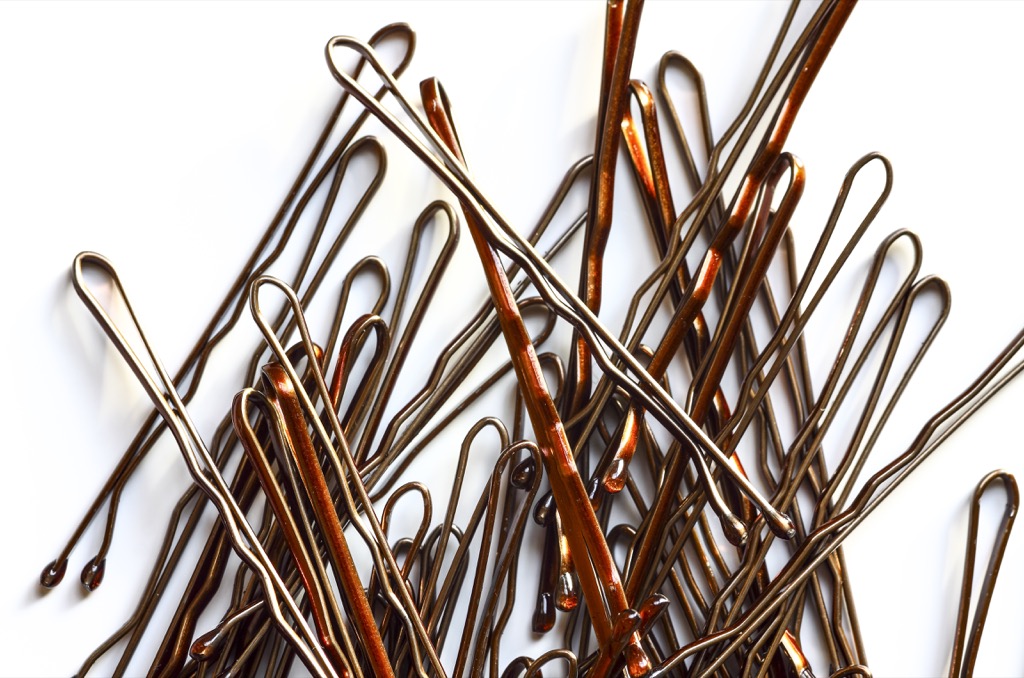
If you've ever wondered why your bobby pins never stay put, the answer is simple: You're using them wrong. Instead of putting the wavy side up, make sure it's facing your head when you secure your hair.
"I learned the correct way to use bobby pins and felt like my mind was blown," writes beauty blogger Michelle Phan. "Apparently, you're supposed to push them into your scalp with the wavy side facing down. The ribbing is actually designed to grip your hair and prevent it from sliding out! From now on, use bobby pins only the correct way and prepare to have your life changed—I promise you will notice a difference!"
18
Counting on stretching before you exercise to prevent injury

Your high school gym teacher may have told you that stretching before a workout can keep you safe from exercise-related injuries. But, according to science, that's not necessarily the case.
A 2013 meta-analysis published in the British Journal of Sports Medicine revealed that stretching before exercising does not decrease the likelihood of injury. "Our data do not support the use of stretching for injury prevention purposes, neither before or after exercise," the researchers plainly stated.
19
Recycling the wrong items

While you may take your recycling out on a regular basis, odds are it's among the things you're not doing correctly. According to the Environmental Protection Agency, people routinely recycle non-recyclable items, including bottle tops, plastic bags, colored paper, aerosol cans, and greasy pizza boxes. We could all do better when it comes to getting recycling right, seeing as a minuscule 8.4 percent of all plastic in the United States gets recycled.
20
Composting damaging food scraps

Getting a composting bin is the first step toward making the planet a healthier place, and we applaud you! That said, odds are you might be adding some things to the mix that you probably shouldn't. Common kitchen scraps, like citrus peels and onions (which can be harmful to the compost's acidity level), bread (which can attract vermin), and walnuts (which contain juglone, a compound that can either halt the growth of other plants or kill them entirely), shouldn't be tossed in at all.
21
Using your oven's warming drawer for storage
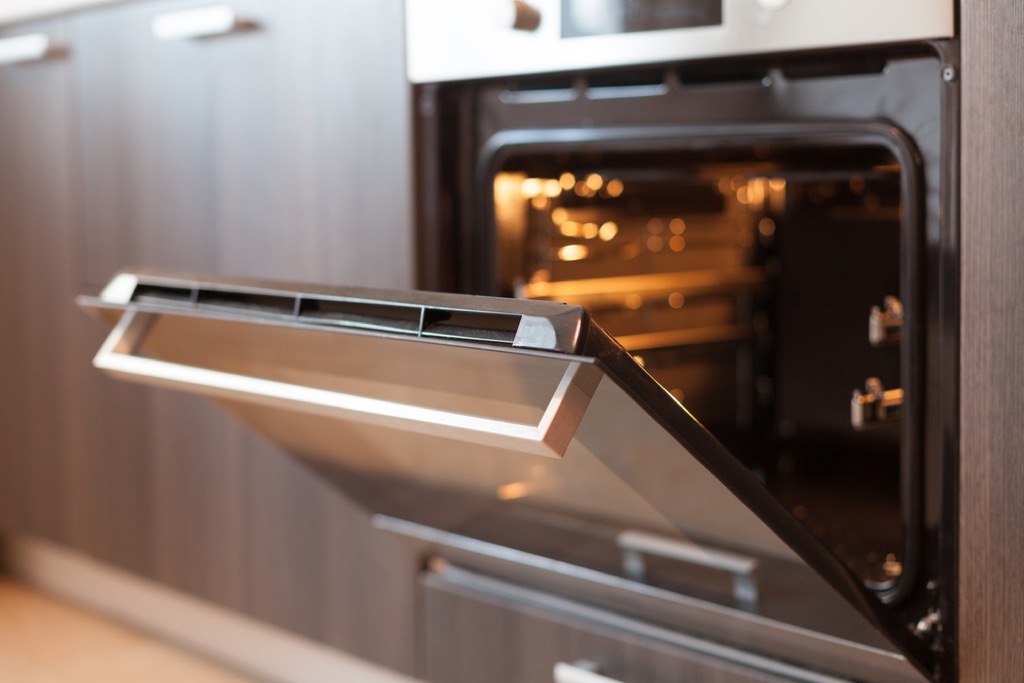
Keeping your dishes warm by covering them with aluminum foil—or heating them up again in the microwave—is hardly the most effective means of maintaining their temperature. Instead, use the warming drawer below the door to your stove. That's right: It's not just for storing extra baking sheets and muffin tins!
22
Unwrapping aluminum foil without securing those tabs
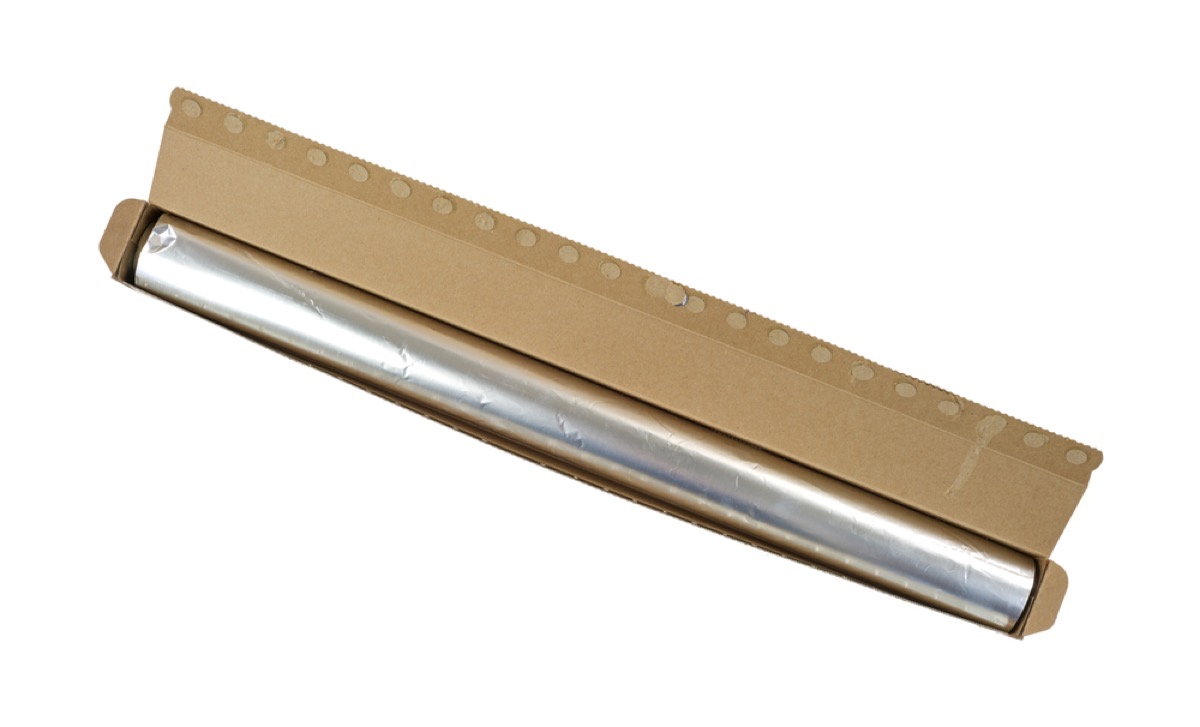
Speaking of aluminum foil, do you always find that it shreds before you can get a full sheet out of the box? If so, simply push the tabs in on either end of the packaging and you'll secure the roll, making those shredded sheets a thing of the past.
23
Softening up ice cream in the microwave

Want to ensure that your ice cream is so soft you can effortlessly scoop it at all times? Stop putting that container in the microwave to warm it up. Instead, pop it into a sealed, freezer-safe plastic bag and it won't harden as much while you're keeping it cold.
24
Starting your meal with just any fork

You're starving. You're seated at a restaurant. You grab the nearest fork to your plate. Whoops! You're making a common mistake it's time to grow out of. Looking at your place setting, the fork and knife on the far left and far right, respectively, are the utensils you should start your first course with. For subsequent courses, move closer to your plate.
25
Waiting until your food arrives to use your napkin

While it may seem to make sense to put your napkin in your lap when your food arrives, doing so is actually a major faux pas. Karen Thomas, founder of Karen Thomas Etiquette, says that "not placing the napkin in your lap immediately upon being seated" is one of the mistakes she sees most frequently.
26
Focusing on keeping your head warm
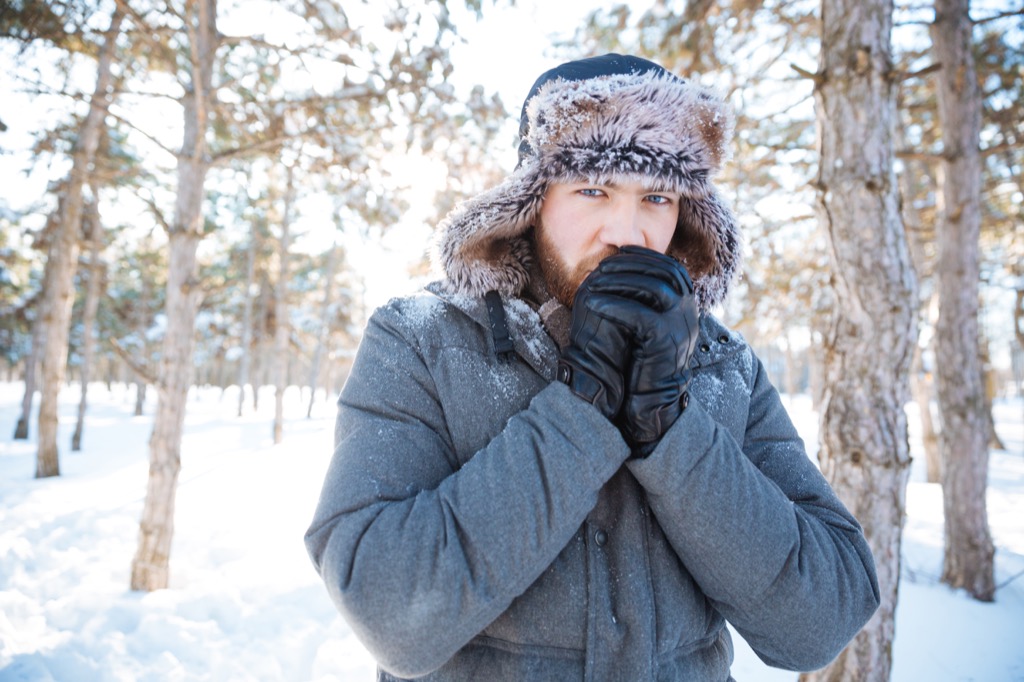
We often hear that most of a person's body heat is lost through their head. However, if you're trying to keep your whole body warm solely by loading up on cozy hats, you're making a mistake. According to a 2008 report published in the British Medical Journal, just seven percent of a person's body heat is lost through their head—far less than the 45 to 50 percent range often reported. Instead, focus on a full-body warming solution.
27
Not using enough sunscreen
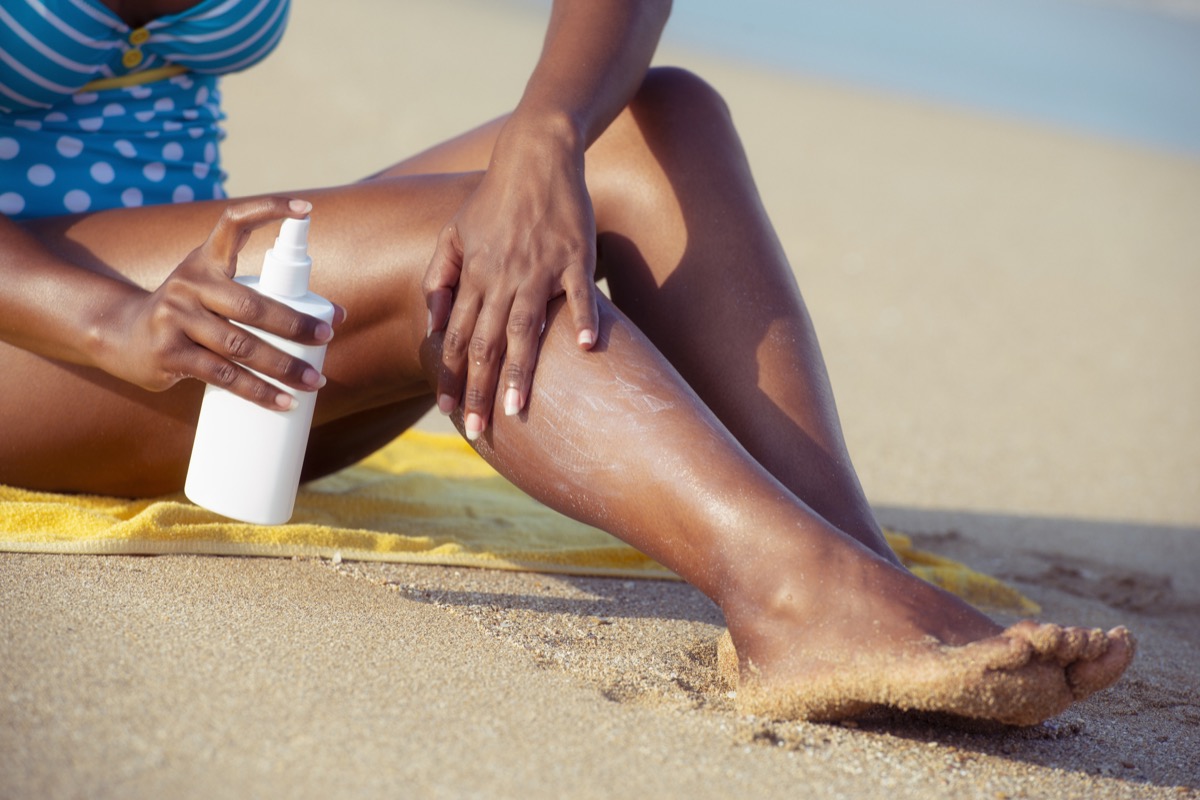
Think spritzing yourself with a little sunscreen is enough to keep burns at bay? Well, in a 2018 study published in the journal ActaDermatoVenereologica, researchers found that most subjects were applying their sunscreen too thinly to provide adequate protection. So, how much should you be using? The American Academy of Dermatology recommends using a shot-glass-sized amount to cover your whole body. And timing matters, too—for maximum effect, it's important to apply your sun protection at least 15 minutes before stepping outside.





















